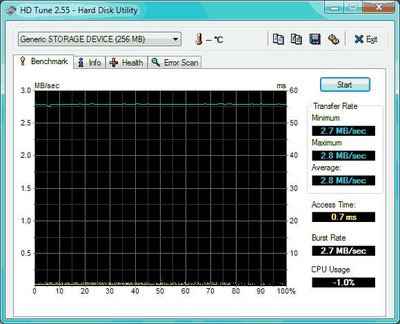First post, by MrKsoft
- Rank
- Member
I recently put together this build from a bunch of parts I've picked up over the last few years.

(Sorry, no inside picture... can't see anything with all the ribbon cables)
AT desktop case - This came from a 386SX-16 system I bought in a lot. The board was completely dead due to battery leakage so I salvaged the case and power supply, and I have the cards/drives that were in it sitting around for an older build (MFM controller and the likes). The case is branded "US Micro Computers" but the model number on the back of the case (CB-386S-16, FCC ID: E8HCH-385S) points to this originally being manufactured by Chicony. I found a mention of this system in an issue of PC Magazine from 1991, where it was called the "Treasure Chest 386SX/16". Overall though it's still a bit of a mystery. So it's kinda a few years too old for the build, but I really like the look of the case. Plus, with so few AT cases around, beggars can't be choosers.
"Green 486 Motherboard" - Not exactly sure what this board is, but it was new-old-stock (got it for a very nice deal considering that!) and came with a manual that only described it as such. No sign of a company that manufactured it or anything and I didn't even see a part number on the board itself that could be used to identify. Board has 4xISA and 3xVLB slots, both 72-pin and 30-pin SIMM slots, and a UMC chipset. For a VLB board, it is an extremely late one with many chips on the board having manufacturing dates around the middle of 1997. On the plus side this means it has a wide array of CPU support and bus options. On the minus side it has the AMI WinBIOS, which is not as flexible as would be preferred, though it does support LBA drives up to ~8GB.
Enhanced Am486DX4-120 - It's not the well known Am5x86-133, but the 40mhz bus gives it a boost to keep up. 256k of cache is installed to cache the full amount of RAM in write-back mode.
32 MB 72-pin FPM RAM - I put is as much as I could while keeping everything cached.
QDI QD6580 VLB I/O Controller - Actually the only VLB controller I have on hand. Not really sure of its pros and cons compared to others... but it works.
Diamond Speedstar Pro VLB - Again... the only VLB video card I have. It is Cirrus Logic GD5426 based with 1MB onboard. I hope to upgrade this in the future for a slight performance improvement.
Aztech Sound Galaxy Washington 16 - A very nice Sound Blaster Pro 2 clone I have had since childhood. It was originally in a Packard Bell and called a Voyetra Sound144AM but is just the Aztech card rebranded. It also has a modem on the same board. I haven't yet figured out if I can disable it completely and free up an IRQ.
Linksys Ether16 - ISA Ethernet card. I haven't been able to get it to work, so I might remove it or try another card. It really wants IRQ 3 but that is being used by COM2 and the Aztech modem.
3.5" 1.44 MB & 5.25" 1.2MB Floppy Drives - Don't remember the brands on these, but I like having one of each type even if the 5.25 isn't going to get much use.
TEAC CD-W512EB 32x CD-ROM Drive - It's actually an RW drive but the other drive I had in here decided it was going to constantly eject itself so I had to go with this. A surprising number of my IDE CD drives have been dying in the past year or so.
CF to IDE adapter w/ slot bracket - Decided to go the CF route for the first time. I have a big pile of CF cards that I can use, and I plan to run different OSes on each one. I currently have set up a Transcend 133x 4GB card running DOS and a WD SiliconDrive 2GB running Windows for Workgroups 3.11. These are especially useful given that the Ethernet is not working so I can't use FTP as I usually do.
Gravis Gamepad Pro - I'm not much of a joystick guy so gamepad it is! Although I'm not sure why these Gravis ones have such a good reputation. The d-pad is horrible and always seems to hit diagonals when I don't intend to. Unfortunately, I have yet to find anything better so this will have to do.
Overall it is handling games satisfactorily. I don't think it's much of a speed demon but it feels nice and reminds me of the nights I spent on the old DX2/66 as a kid. Some benchmarks...
3DBench: 62.5
PCPBench: 14.5
Speedsys: CPU 42.17, Disk 3979.28 (Messed up due to CF I suppose, read speeds were really around 1600 KB/s)
Doom: 2134 gametics in 2205 realtics (33.8 FPS)
Quake (just for laughs): 10.4 fps
Load times seem a bit slow due to the CF card and it has resulted in a few corner cases - for instance Duke 3D is completely unplayable because the game stutters every time a new sound effect is loaded. (Though the game is probably better suited for a Pentium anyway, so I'll just skip it on here). Overall though a successful build.
Wafflenet OPL Archive - Preserving MS-DOS music in a unified format!

